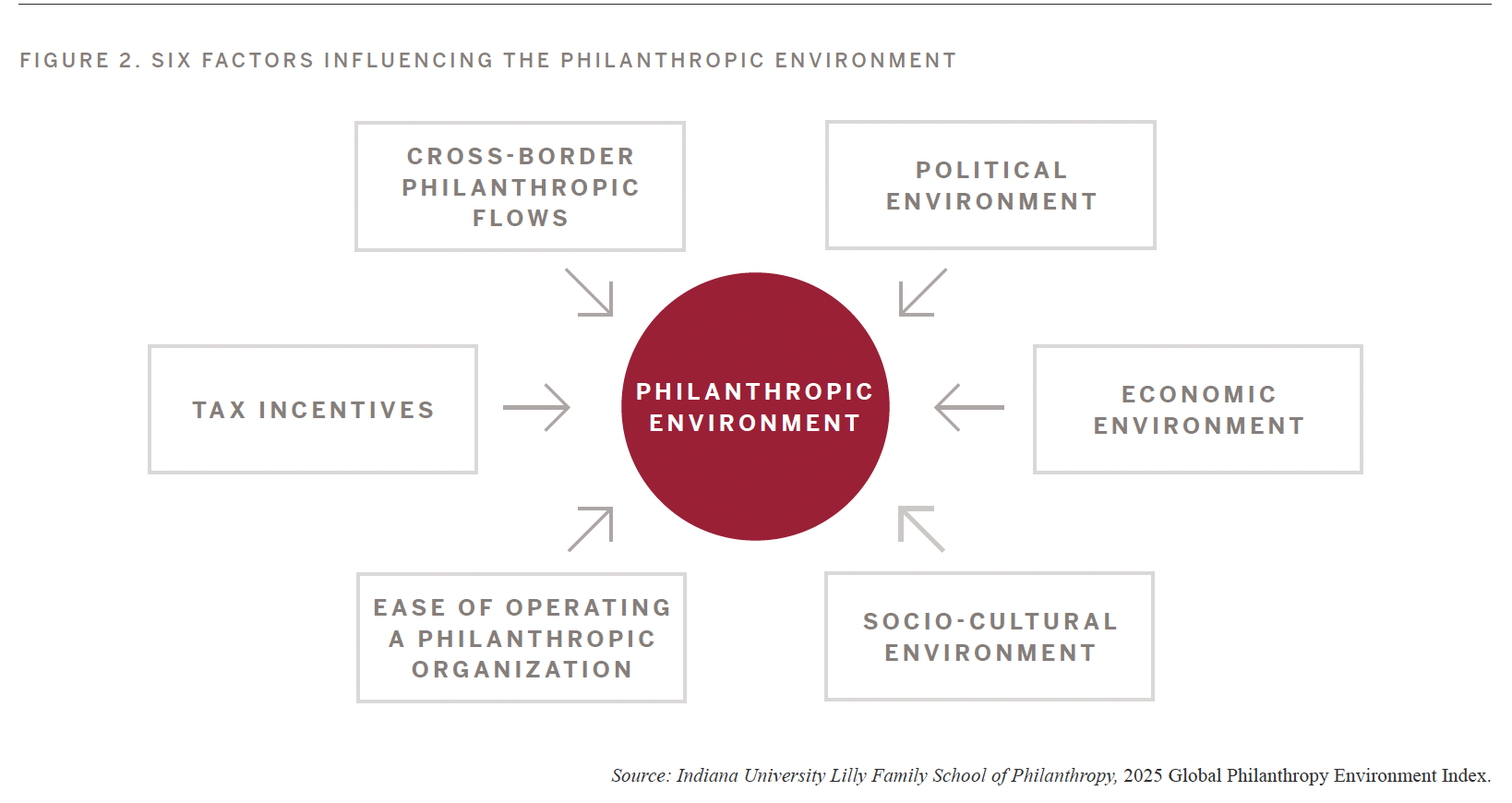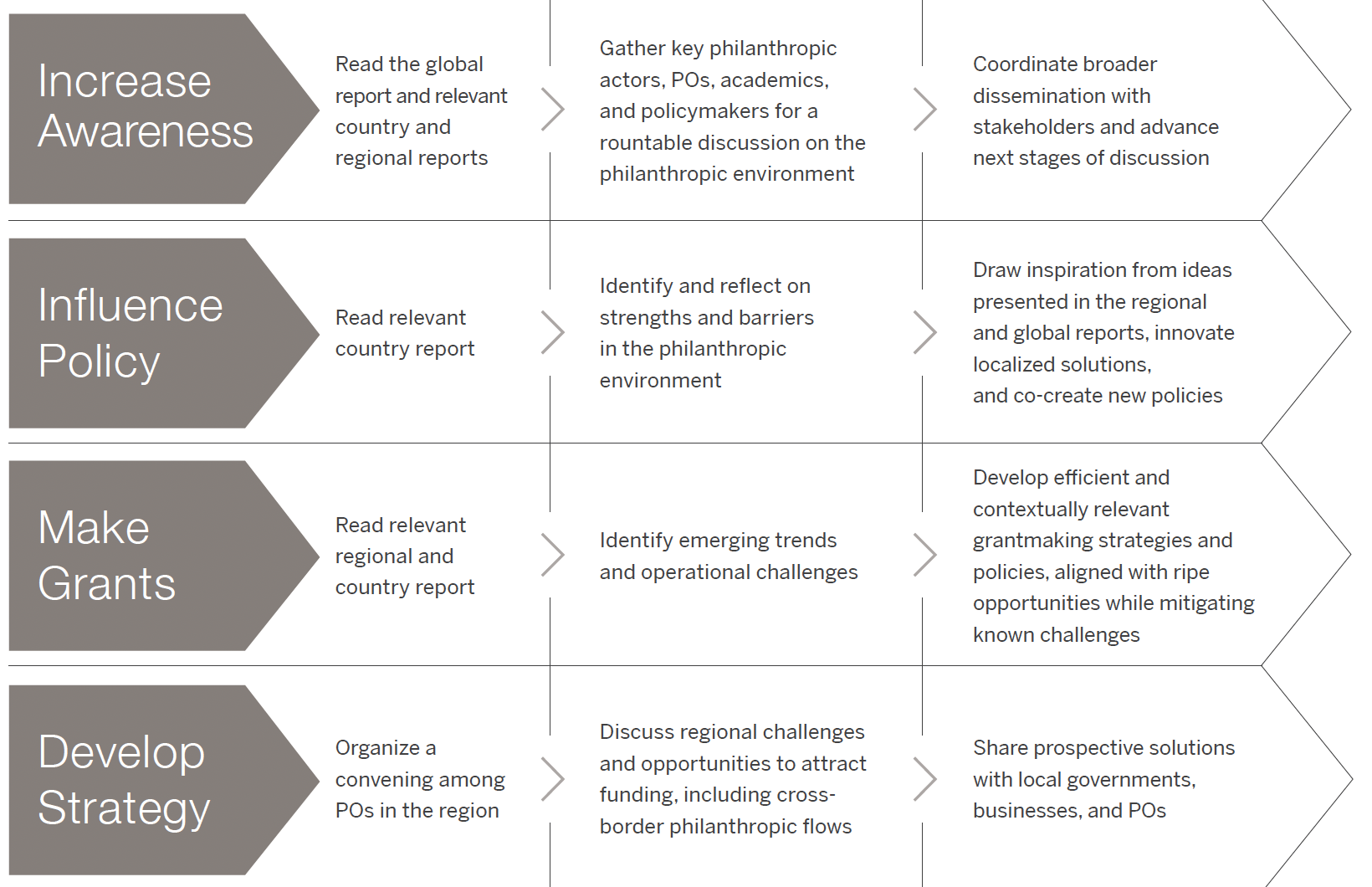The Global Philanthropy Environment Index (GPEI) provides the tools government, civil society, and philanthropy leaders need to understand how and where the philanthropic environment is changing and evolving and—most importantly—how to maximize philanthropy’s ability to help solve pressing challenges.
This one-of-a-kind global research (including one global report, 15 regional reports, and 95 country reports) is prepared in partnership with global, regional, and country-level experts who assess the environment for philanthropy by examining incentives and barriers to giving. The evaluation of the countries and economies that make up the GPEI helps reveal the complex ecosystem of regulations, politics, and cultures that shape global philanthropy.





